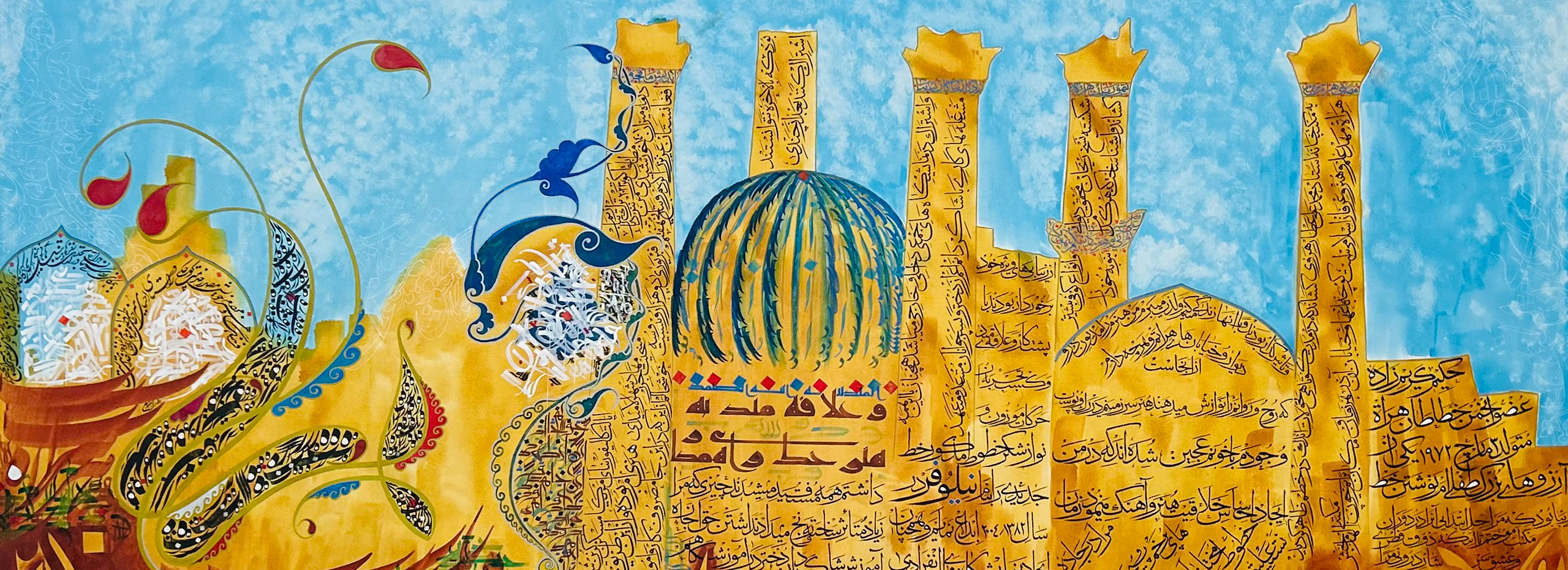
In the wing gallery, Floor 2L
In conjunction with this exhibition, the Johnson Museum hosted artist Hakim Karimzada to discuss his work: click here to watch.
This exhibition features the calligraphy of Afghan artist Hakim Karimzada, a master calligrapher with more than three decades of experience in different types of traditional and modern scripts. Born in 1972, he comes from the city of Herat, a significant political, cultural, and artistic center in Afghanistan for centuries. Karimzada writes classical Persian and modern Afghan poems with reed pen in various script styles, from traditional calligraphy and illumination to abstract calligraphic painting, and a script of his own invention called Nilofar.
During the first rule of the Taliban (1996–2001), Karimzada had been working with the charity World Vision International and practicing calligraphy secretly at his home. Once the Taliban discovered he was an artist, they shaved his hair and threatened him, but he continued his practice, hiding all his work. After the Taliban were defeated, Karimzada was able to pursue his art freely and began teaching at the Herat Art School of Herat University. Along with colleagues, he established the Calligraphers Association of Herat.
The Taliban resumed control in 2021 and banned women and girl students from participating in the calligraphy association. Karimzada was teaching calligraphy classes at the National Gallery of Herat in 2021 when he was forced to flee Afghanistan. He explains, “I reached a point where I couldn’t even breathe anymore and felt suffocated. Although I never wanted to leave my homeland, I had no choice. Because I had worked with the Americans during my career, I was fortunate to come to the US with a Special Immigration Visa, but my older children, both over the age of 21, remain in Afghanistan.”
Now living and working in California, Karimzada combines the joy of abandon with color to create bold, bright, and daring pieces that tell his own experience of migration. For him, calligraphy celebrates his beloved hometown of Herat, and through it he introduces the ancient culture and civilization of its people. Karimzada’s presentation of each word evokes the striving soul, passion, and struggle in human life, emphasizing that art can serve as a bridge to understanding others as well as ourselves.
This exhibition was curated by Sharifa “Elja” Sharifi, an artist and the former general manager of the National Gallery of Herat. She is a visiting scholar at the Johnson Museum of Art, supported by Global Cornell, the Institute of International Education Artist Protection Fund (IIE-APF), and an Afghan Challenge Fund Fellowship from the Threatened Scholars Initiative of the Open Society University Network at Bard College. The exhibition has been supported by the Russell ’77 and Diana Hawkins Exhibition Fund.
Above: Herat and Me (detail), 2024. Ink and acrylic color on canvas. Courtesy of the artist.








